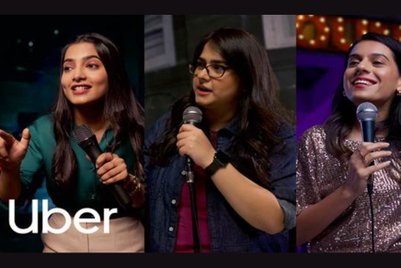How has Ola Cabs evolved since 2011? How has the category evolved?
Personal transportation as a category isn’t highly evolved in our country. Car ownership in India is pretty low, at two to three per cent, compared to around 60 per cent in the West. Taxi as a personal transportation system is also unavailable other than Mumbai and Kolkata. In these cities too, the number of taxis available is disproportionately lower than the number of people who would want a reliable mode of transportation. Autos are the most available transport system in the country, but definitely not the experience you want to cover a decent distance. They don’t serve the purpose when it comes to longer distance travel. Going the way cities are growing in multiple directions, they may not be able to take care of the public. This is what brings us to a very clear need of a reliable choice of personal transportation. We think it’s a fundamental need. It’s as simple as roti, kapda, makaan and transport. We are 20 per cent of the world’s population and a significantly large country. These were the fundamental premises when we started out. We’ve grown significantly in terms of our approach to the category, booking mechanisms.
When we started out, we saw the fairly unorganised, inefficient transport system. To travel in the city people would end up paying for a certain number of hours. This wasn’t the best way to travel. Not only was this a barrier for the consumer but also for the driver and operator. For him it was about absolute inefficiency – he wouldn’t end up doing more than two to three trips a day. That’s where the thought came from and we thought of using technology to enable ease of booking for consumers and on the other hand increase efficiency for the driver. We started with nothing but a website. Back then (in 2011), India was yet to see a peak on mobility and smart phone penetration.
So, we started with a website. We had multiple models and car categories depending on the travel need. This made it easy for the customer to make a choice. We integrated this with a smart-phone application back to the driver, which helps us track where he was and with the bookings. This could also make the drivers available for more bookings.
Within a few months, we realised India is on the cusp of the smartphone revolution, and it was time for us to be present on the phone. So, we launched our mobile app. Slowly, we added more functionality in the app for a wholesome cab experience.
On the front-end, we believe the driver is our customer. We don’t own a single car of the 50,000 cars across 28 cities we are present in. We are a mobile platform that helps customers and drivers connect with each other through technology and make transportation extremely convenient.
Which are the leading markets for Ola? How is this changing?
Bengaluru is our largest market, by far in terms of absolute numbers. We have 8,000 cars across three categories in the city. The reason for this is because it lacks any other mode of reliable personal and public transport. The city is growing leaps and bounds and it’s at a cusp at a great revolution in terms of the people moving in. It’s also one of our fastest growing in absolute numbers. In terms of percentage, our tier II and III cities are seeing highest growth because of the low denominator and the lack of transport facilities. Consumers from these areas are sticking to it instantly.
Among the services offered, which would you call your flagship in a category like this?
We started off with the sedan category in most cities. So, many people referred to the sedan category as the flagship. If you look at the largest growing category, it is mini. Mini is the entry-level car category and is offered at Rs 10 per kilometre. This makes it cheaper than autos in a city like Bengaluru. I think that’s a great price point for people to choose cabs as their primary mode of transport.
With so many radio cab services coming up, at around the same price with the same offerings, what’s the differentiator for Ola?
The most interesting thing about Ola is our understanding of the market both on the supply side and the demand side.
We work with the highest number of driver partners in the organised market. On the other hand, we have a far deeper understanding of user behaviour. That’s the reason we have been able to scale from one city to 28 cities in four years.
We introduced and pioneered the concept of driver entrepreneurship. We help the driver buying his own car and making him an entrepreneur with Ola. That’s something that drivers really respect us for and love to work for us. We help them with loans and buy cars, access to garages and maintenance help. We are like a handholding incubator for these drivers that can help them progress to operators.
For the customers, we were the first to pioneer and bring such a wide array of choice. We have multiple categories of cars, with multiple booking options and payment options. We offer Mini, Sedans, Primes, Kaali Peelis (in Mumbai), autos (in Bengaluru, Chennai and Pune) and more. It’s about making everything available for a customer on one platform.
Those are the differentiators.
Can you explain Ola’s revenue/cost structure - from the driver and company’s perspective?
The Ola Cab is owned by the driver. For every ride that he makes, he takes the ride value from the customer. Twenty per cent of the total ride value comes to Ola as commission.
Currently, we are seeing a lot of discounting and offers in the category to reach out to consumers. When you think the category can mature?
I would agree that there’s a lot of discounting offered by multiple players on multiple levels. We’ve refrained from doing that in the recent past because of two things. We’ve scaled up quite a lot compared to the other players in the market. The advantage we have is the network connect. We are seeing more customers and more drivers willing to come on the platform.
Occasionally, we take this route (discounting) but those are very limited period offers. For us, we believe that our drivers are our customers. We need to be serving them and as entrepreneurs, they need to sustain for themselves. That happens only when we offer competent prices and that builds efficiency. Ola Mini (that offers as low as Rs 10 per kilometre) was tested intensively. The revenue the driver earns by reducing the fare from Rs 13 to 10, is overall about 35-40 per cent more than what he was getting earlier. This make it very rich and exciting for all the drivers. The efficiency of scale can be passed on to the customer. The lower fare is not discounting but achieving economies of scale that’s making us sustainable. That’s what makes us different in terms of approach pricing.
What are the marketing initiatives Ola has indulged in since 2011?
We’ve looked at engagement initiatives rather than just marketing initiatives. The idea is to help the customer understand what Ola as a platform stands for and what we believe in and help the customer connect with us better.
For Diwali earlier this year, we launched Ola Connect for a week. We asked people to send a gift to their loved ones in any of the cities we operated in through our app, just like one would look to book a cab. Thousands of customers took to this app, and delivered a box of sweets to their loved ones in different cities. This is something that you wouldn’t be able to do even through a large e-commerce site.
We do our own traditional media marketing as well – radio, print and digital. We feel our strongest connect and reach with the consumer comes through initiatives (such as Ola Connect) that are closely linked with the brand.
Considering you operate in the same category as Uber, what affect has the recent incident made to the brand?
We have done two things to address this. All our drivers are licensed and are verified by the government. We also train them. Most of them are entrepreneurs who own their cars, with loans etc on their names, so that’s another layer of investigations for them.
Every car also has a smart phone with a GPS-enabled system. We have added an additional layer of GPS in each car post this incident, which has made this even more rigorous. Every step necessary will be taken to ensure nothing like this happens again - not just in terms of a company but in terms of the overall industry. That’s our responsibility we have got as market leaders for the industry.
(This appeared in the 26 December issue of Campaign India)




.jpg&h=334&w=500&q=100&v=20250320&c=1)
.jpg&h=334&w=500&q=100&v=20250320&c=1)


.jpg&h=334&w=500&q=100&v=20250320&c=1)


.jpg&h=334&w=500&q=100&v=20250320&c=1)
.jpg&h=334&w=500&q=100&v=20250320&c=1)





.jpg&h=268&w=401&q=100&v=20250320&c=1)
.jpg&h=268&w=401&q=100&v=20250320&c=1)


